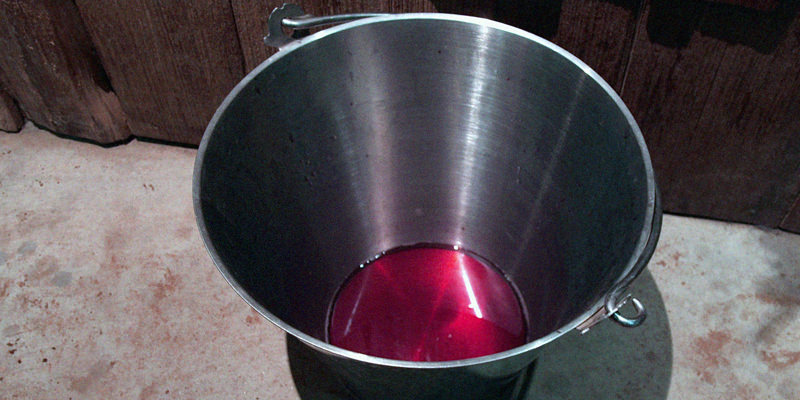

In winery tasting rooms across the country, spit buckets line the bar. Whether people use them or not, the simple presence of the buckets means the expectation is there. But for some reason, you don’t see spit buckets in a brewery, and ditto at liquor tastings. Whether it’s served in cocktails or neat, there are no spit buckets. Granted, you’re not tasting tens of different liquors in a row like you would with wine or beer, but six tastes of six different whiskies is nothing to scoff at.
Why the spit bucket discrepancy? It has to do with how to maximize the flavor of what you’re drinking.
Wine
Different wine occasions call for different wine etiquette. If you’re visiting multiple wineries, spitting out some of the wine allows you to make it to multiple destinations without getting too inebriated. Yet there’s another, more tasteful, factor that dictates spitting wine: aeration.
“Wine is right in that happy place where there’s alcohol, but there are so many things happening that the more you aerate it, the more it opens up,” Ian Smedley, the head sommelier at DBGB in Manhattan, tells me. “Spitting is just one last aeration.”
Beer
Beer has carbonation. Regardless of what style of beer you’re drinking, there are going to be bubbles, and you’re going to be drinking those bubbles.
“Unlike wine, beer has carbonation, and as you take a sip, CO2 escapes the liquid as gas and rises from your throat to your nasal passage, carrying some flavor of the beer,” Deschutes Brewery writes on their website. Bitter, sweet, sour, salty, and umami are tasted on the tongue. Everything else is a smell, and a beer’s smells become apparent when you swallow.
“Thus, the sense of smell combines with taste to get an overall flavor of the beer in a different manner than un-carbonated wine,” Deschutes Brewery writes. “To get the full flavor experience of beer, one must swallow.”
Liquor
With liquor, swallowing during a tasting helps you better gauge how smooth or harsh the high level of alcohol is. You can taste the heat of the alcohol when you hold it in your mouth, but you really feel it in the back of your throat.
Let’s say you find yourself at a whiskey tasting and there’s not a spit bucket in sight. When it comes time to taste it, swish it around your mouth so it coats all of your palate. Then swallow it, breathe in through your nose, out through your mouth, and then in through your mouth again. This technique will give you “a full flavor component of what you have going on,” Angie Jackson, a mixologist who goes by “The Traveling Elixir Fixer,” explains in a tasting video.
Pro tip for liquor tasting beginners: Keep your sips small and keep track of how many tastes you have in front of you.
